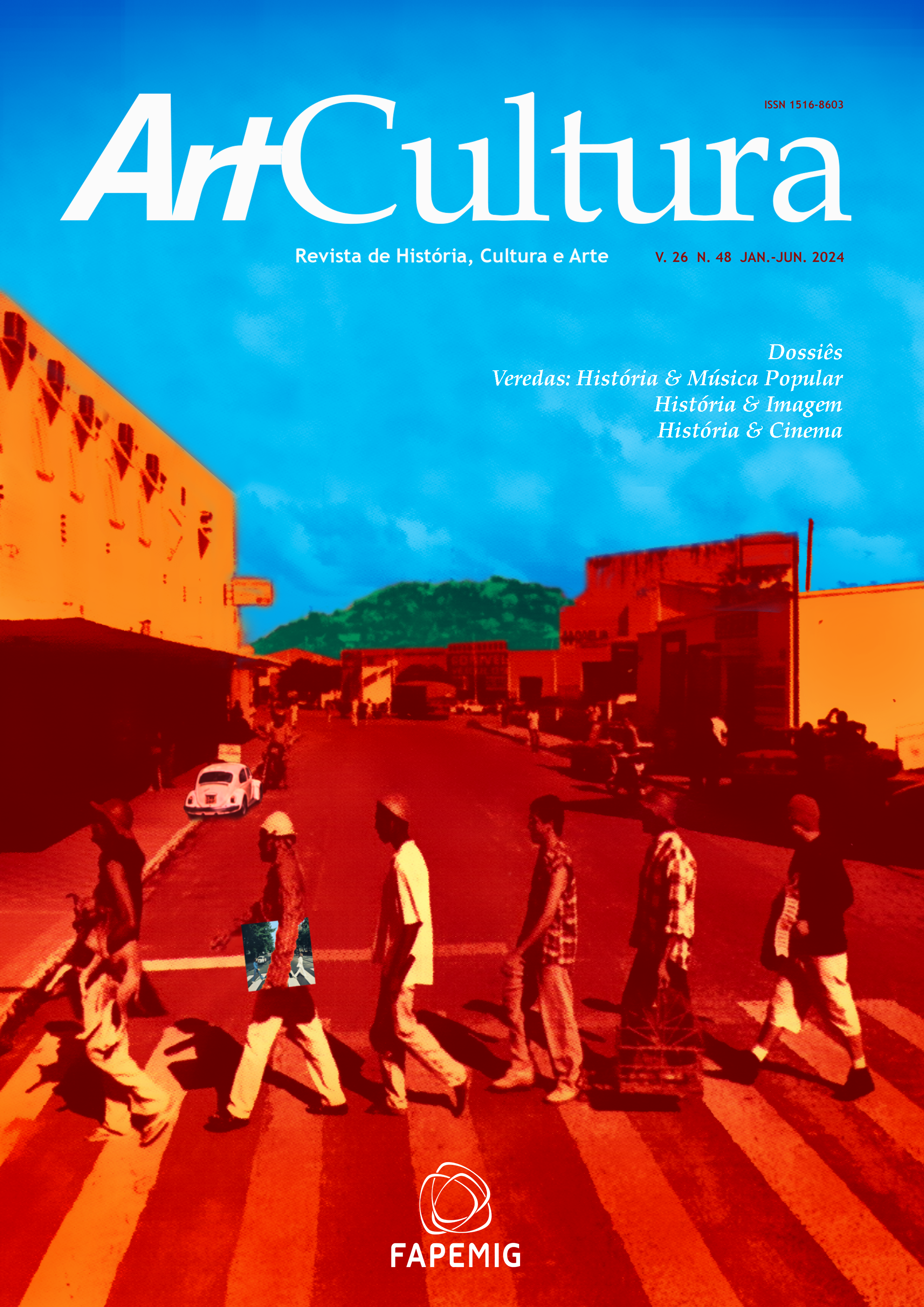Subjectivity and soundscape, motor-bikes and music
DOI:
https://doi.org/10.14393/artc-v26-n48-2024-75976Keywords:
heavy metal, guitar, motorcycleAbstract
The article analyzes the relation between foreground and background in heavy metal. First, it uses an analogy regarding babies, then it explains the concept of sonic anaphones and the idea of figure-ground as melody-accompaniment and finally it reaches the music genre in question. What is at play is the relationship between culture and subjectivity in the way it is expressed through sound, more specifically in relation to an archetype which became common in the postwar era between poor young man: the lonely motorcyclist. I argue that there is a relationship between this motorcyclist’s position and the position of the guitar in heavy metal. The same context which made it possible that these young man bought motorcycles for a fair price also made it possible that they created an analogous musical culture, through which these young men appropriated the urban sound that usually dominated them.
Downloads
References
APEL, Willi (ed). The Harvard Dictionary of Music. Cambridge: Harvard University Press, 1958.
BENEDEK, László. The wild one. Columbia Pictures, 1953.
BENGTSSON, Ingmar. Melodi. Sohlmans musiklexikon, n. 4, Stockholm, 1977.
FURIE, Sidney J. Little Fauss and Big Halsy. Paramount Pictures, 1970.
GOLDSCHMIDT, Harry. Palestra proferida na conferência Beethoven, Berlin, 1970.
GORMAN, Roger. The wild angels. American International Pictures, 1966.
HALLER, Daniel. Devil’s angels. American International Pictures, 1967.
HOPPER, Dennis. Easy rider. Columbia Pictures, 1969.
JELOT-BLANC, Jean-Jacques. Le cinéma musical: du rock au disco 1953-1967. Paris: PAC, 1978.
LARSON, Glen A. Knight rider. Universal Studios, 1982-1986.
LAUGHLIN, Tom. Born losers. American International Pictures, 1967.
LUCAS, George. Star wars. Lucasfilm, 1977.
MARÓTHY, János. Music and the bourgeois, music and the proletatian. Budapest: Akadémiai Kiádo, 1974.
MIDDLETON, Richard. Studying popular music. Buckingham: Open University Press, 1990.
Philishave Tracer (comercial de TV). Canal Sky, dez. 1986.
RUSH, Richard. Hell’s angels on wheels. U.S. Films, 1967.
RUSH, Richard. The seven savages. American International Pictures, 1968.
SCHAFER, R. Murray. The tuning of the world. Bancroft: Arcana, 1977.
SCOTT, Tony. Top gun. Paramount Pictures, 1986.
SPHEERIS, Penelope. Wayne’s world. Paramount Pictures, 1992.
TAGG, Philip. Kojak: 50 seconds of television music: towards the analysis of affect in popular music. Göteborg: Skrifter från Göteborgs Universitet, Musikvetenskapliga Institution, 2, 1979.
TAGG, Philip. Analysing popular music. Popular Music, n. 2, Cambridge, 1982.
TAGG, Philip Musicology and the semiotics of popular music. Semiotica, v. 66, n. 1/3. Amsterdam, 1987.
TAGG, Philip. Music in mass media studies. Reading sounds for example. In: Popular music research. Göteborg: Nordicom-Sweden, 1990.
TAGG, Philip. Towards a sign typology of music: secondo convegno europeo di analisi musicale. Trento: Università degli Studi di Trento, Dipartimento di Storia della Civiltà Europea, 1992.
TAGG, Philip. Subjectivity and soundscape, motor-bikes and music. In: JÄRVILUOMA, Helmi (ed.). Soundscapes: essays on vroom and moo. Tampere: Department of Folk Tradition, 1994.
TAGG, Philip. The decline of figure and the rise of ground. Popular Music, v. 12, n. 2-3, Cambridge, 1994.
TAMLYN, Garry. Rhythmic organisation in rock and roll. Tese (Doutorado em Música) – University of Liverpool, Liverpool, 1994.
Downloads
Published
How to Cite
Issue
Section
License
Autores que publicam nesta revista concordam com os seguintes termos da licença Creative Commons, adotada a partir da ArtCultura, v. 21, n. 39 (jul.-dez. 2019).
CC BY-NC-ND 4.0: o artigo pode ser copiado e redistribuído em qualquer suporte ou formato. Os créditos devem ser dados ao autor original e mudanças no texto devem ser indicadas. O artigo não pode ser usado para fins comerciais. Caso o artigo seja remixado, transformado ou algo novo for criado a partir dele, ele não pode ser distribuído.
Autores têm autorização para assumir contratos adicionais separadamente, para distribuição não exclusiva da versão do trabalho publicada nesta revista (ex.: publicar em repositório institucional ou como capítulo de livro), com reconhecimento de autoria e publicação inicial nesta revista.


